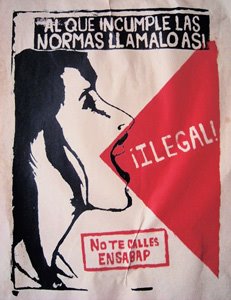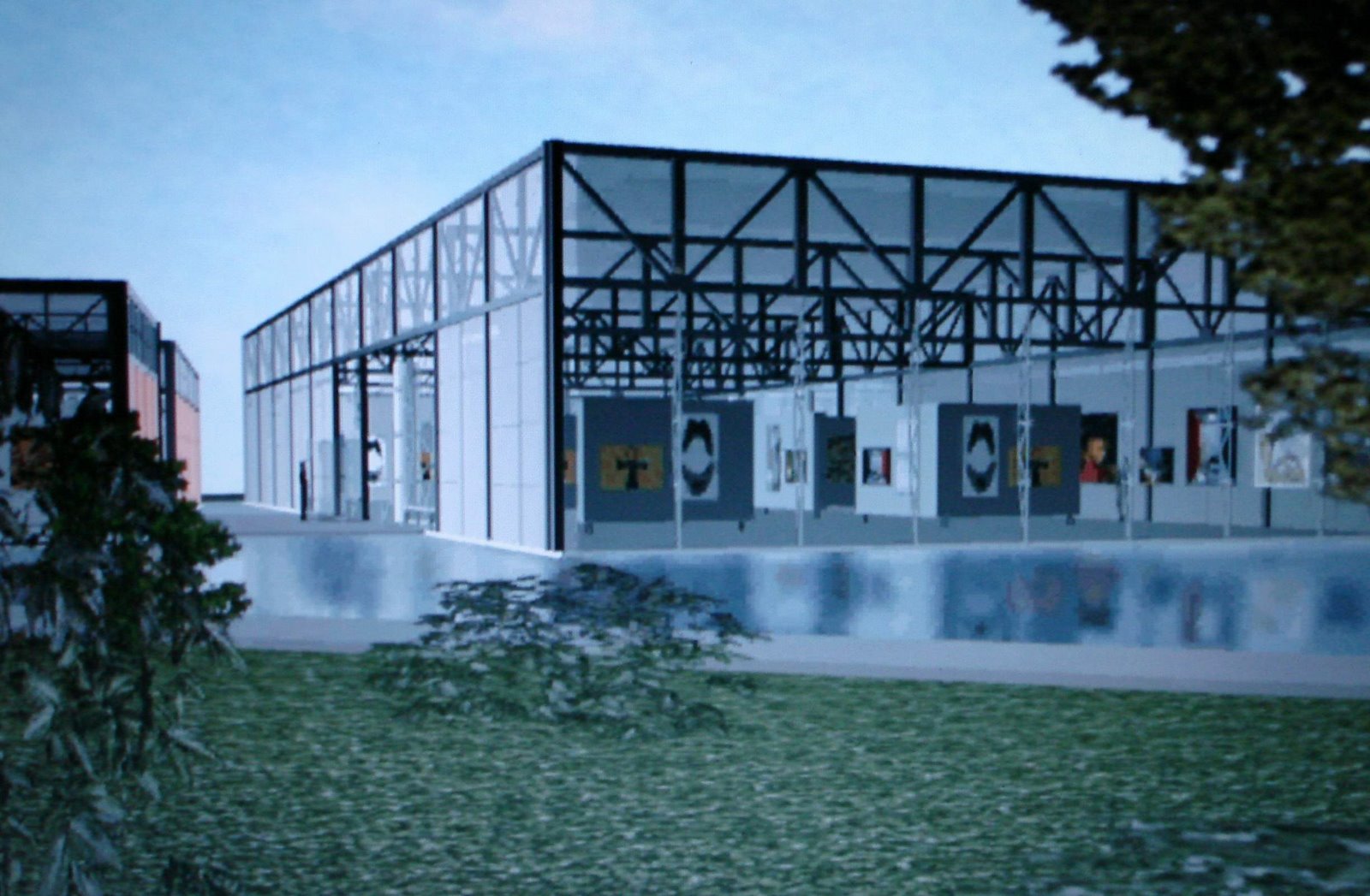



NEW YORK, NY – January 17, 2008 – El Museo del Barrio, New York’s premier Latino and Latin American cultural institution, is pleased to announce its groundbreaking exhibition Arte ≠ Vida: Actions by Artists of the Americas, 1960 – 2000, which will be on view from January 30 through June 8, 2008. “Arte no es vida” surveys, for the first time ever, the vast array of performative actions created over the last half century by Latino artists in the United States and by artists working in Puerto Rico, the Dominican Republic, Cuba, Mexico, Central and South America. Curated by Deborah Cullen, Director of Curatorial Programs at El Museo del Barrio, Arte ≠ Vida is the recipient of a prestigious 2006 Emily Hall Tremaine Exhibition Award.
Through a rich and lively presentation of photographs, video, texts, ephemera, props, and artworks that reference canonical works, the exhibition represents a landmark within the documentation of action art. Arte ≠ Vida expands standard descriptions of “performance art,” revealing how work created by Caribbean, Latino and Latin American artists is often not only dramatized but politicized. An accompanying exhibition catalogue will serve as the first comprehensive resource publication to address this segment of the field of performative art. “El Museo del Barrio has a great history of conceiving and presenting exhibitions that advance deeper understanding of Caribbean and Latin American art and culture,” says Julián Zugazagoitia, Director of El Museo del Barrio. “This project furthers our mission by bringing the Latin American contributions within performative art to a larger audience, and within a historical context, it is particularly resonant for us as it includes the work of El Museo’s founding director, Raphael Montañez Ortiz, a leading action artist well before the museum’s founding in 1969.”
Many of the works included in Arte ≠ Vida have subtle or overt political contexts and content: military dictatorships, civil wars, disappearances, invasions, brutality, censorship, civil rights struggles, immigration issues, discrimination, and economic woes have troubled the artists’ homelands continuously over the past four decades and therefore have infiltrated their consciousness. According to curator Deborah Cullen, “the exhibition title challenges the commonplace idea that art is equivalent to life, and life is art. What is proposed through these many works is that while art affirms and celebrates life with a regenerative force, and sharpens and provokes our critical senses, artistic actions which address inequalities and conflict are not equivalent to real life endured under actual repression.”
Over 75 artists and collectives are represented in Arte ≠ Vida, including ASCO, Tania Bruguera, CADA, Lygia Clark, Papo Colo, Juan Downey, Rafael Ferrer, Guillermo Gómez-Peña, Alberto Greco, Alfredo Jaar, Tony Labat, Ana Mendieta, Marta Minujin, Raphael Montañez-Ortiz, Hélio Oiticica, Tunga and contemporary practitioners including Francis Alÿs, Coco Fusco, Regina José Galindo, Teresa Margolles and Santiago Sierra. The exhibition is arranged in four major sections, in which each decade is represented by several specific themes that often cross national boundaries. 1960-1970 looks at select precursors, signaling, destructivism and neoconcretismo; 1970-1980 considers political protest, class struggle, happenings, land/body relationships and border crossing; 1980-1990 focuses upon anti-dictatorship protest and dreamscapes; and 1990-2000 references the Quincentenary, multiculturalism, postmodernism and endurance. An additional section highlights interventions that artists have carried out on television over the past 20 years. In these chronological, thematic groupings, viewers will be able to explore the interconnections among various artists’ actions as well as the surges of activities triggered by specific events in certain countries.
A forthcoming bilingual English-Spanish resource publication will supplement Arte ≠ Vida: Actions by Artists of the Americas, 1960 – 2000. It will provide a chronological overview, and will allow both established and emerging voices to address each of the ten regions represented in the exhibition in depth. Published by El Museo del Barrio and distributed by D.A.P., the volume will also include a detailed chronology, brief artist’s biographies and a bibliography, and will be available in May 2008.
A full range of free public programming will be offered along with the exhibition at El Museo del Barrio. Visual arts events will include a performance by Nao Bustamante in March, a panel on actions by Chilean artists with Eugene Dittborn, Alfredo Jaar and Lotty Rosenfeld, among others on April 9, and a symposium with Coco Fusco, Roselee Goldberg and Diana Taylor. Featured among other spring programs at El Museo will be free Saturday gallery tours offered in English and Spanish, family art workshops, a film series highlighting recent films from Latin America, spoken word events and readings by authors including Mario Vargas Llosa.
Arte ≠ Vida: Actions by Artists of the Americas, 1960 – 2000 is made possible by an Emily Hall Tremaine Exhibition Award and by the Jacques and Natasha Gelman Trust. Exhibition programs are supported, in part, by public funds from the New York City Department of Cultural Affairs and the New York State Council on the Arts. Media sponsorship has been provided by Univision 41 / Telefutura 68. In-kind support for the opening reception is provided by Rums of Puerto Rico and ACE Party Rental.
![[flyer.jpg]](http://4.bp.blogspot.com/_pvbHa013fFM/SdVn5xJxYVI/AAAAAAAAB6k/uCATKnGK-0o/s400/89jpg.jpg)
![[flyer.jpg]](http://3.bp.blogspot.com/_pvbHa013fFM/SZYbEhrckFI/AAAAAAAAB3Q/3AvlpBq-VTY/s1600/flyer.jpg)



3 comentarios:
Aqui pueden encontrar el review del New York Times con algunas imágenes, lamentablemente no incluyen fotografías del montaje en el museo.
http://www.nytimes.com/2008/02/01/arts/design/01vida.html?ref=design
q paja y q bien
No llegué a ir a la inauguración. Pero pronto me daré una vuelta. Si está paja, comento.
Publicar un comentario